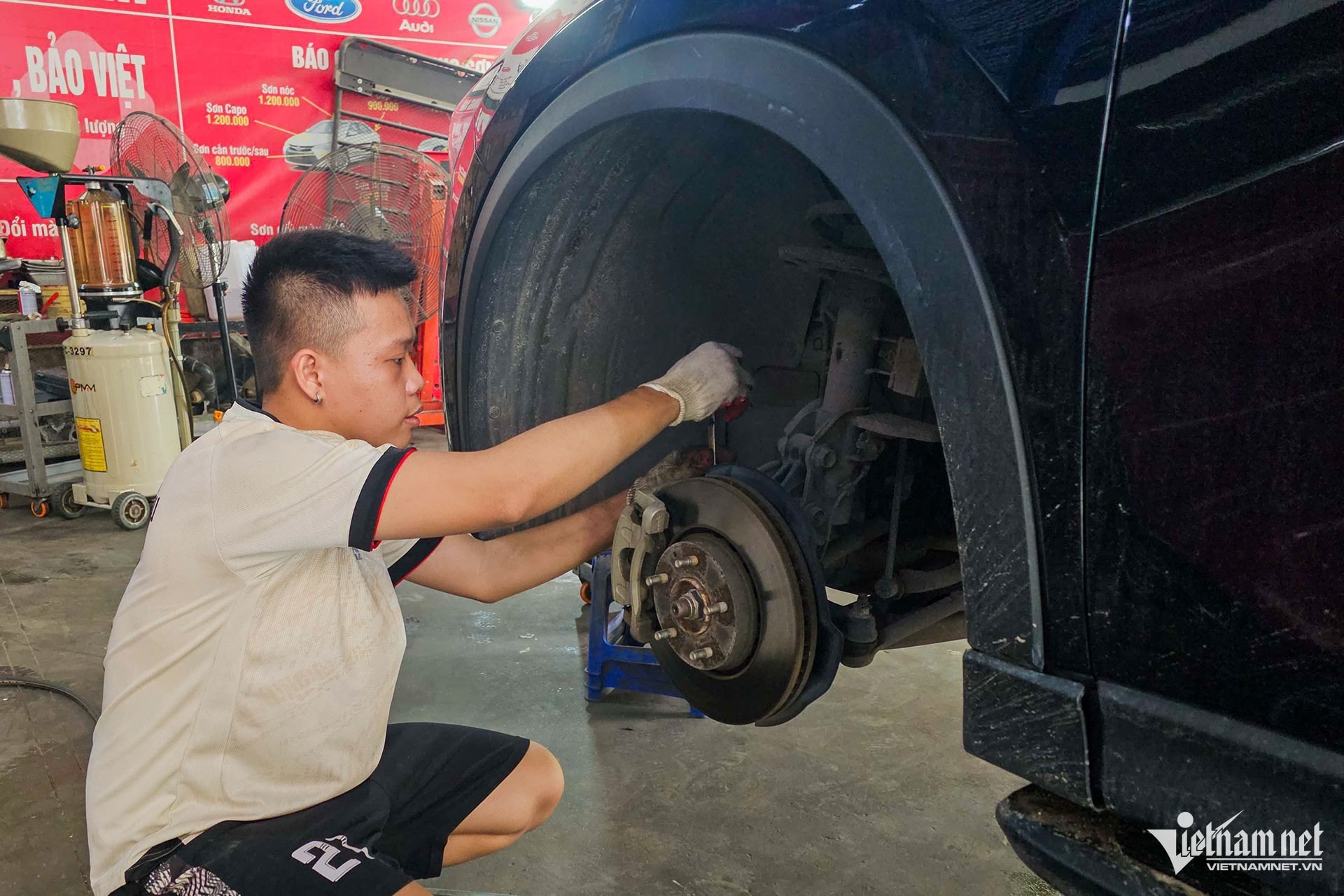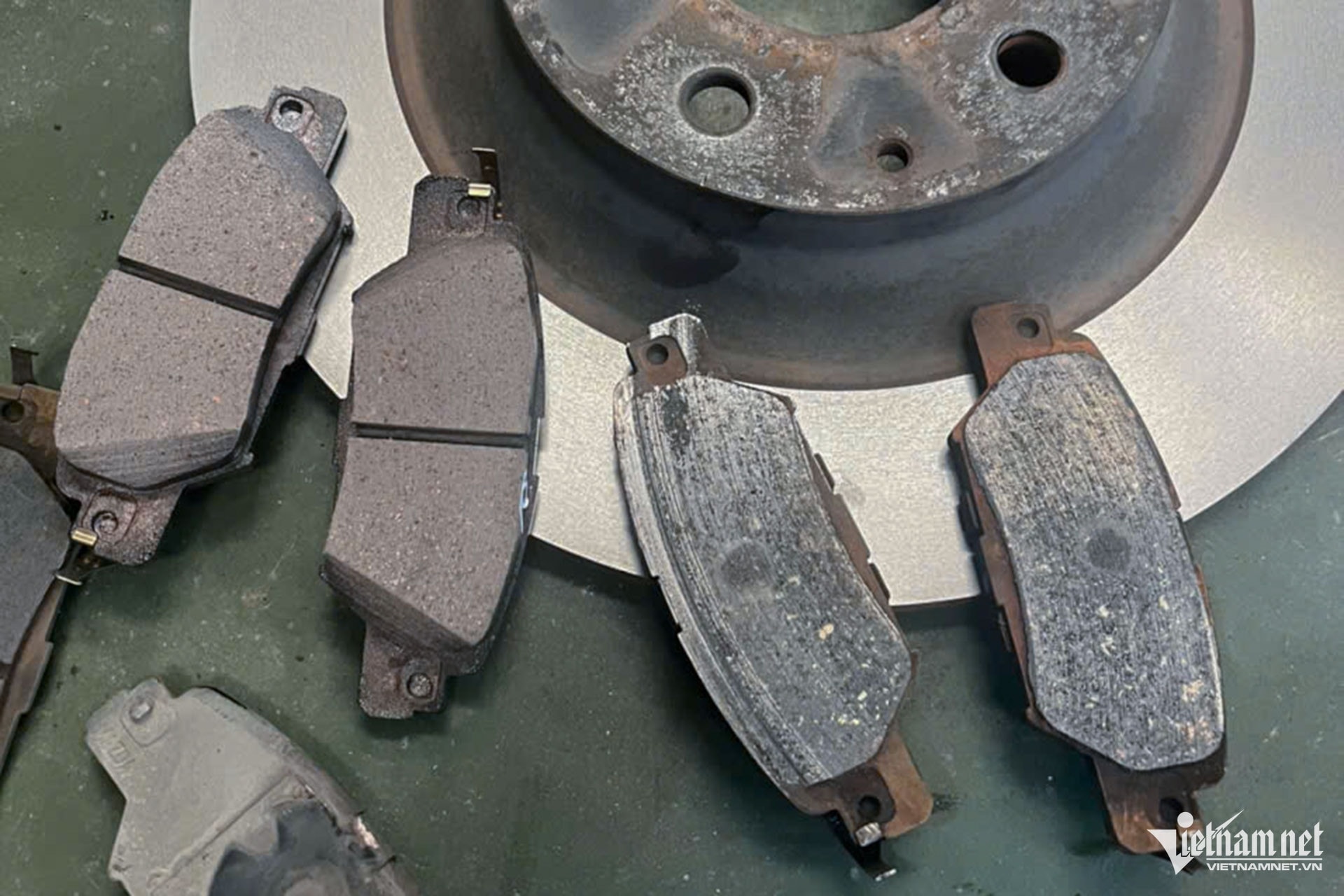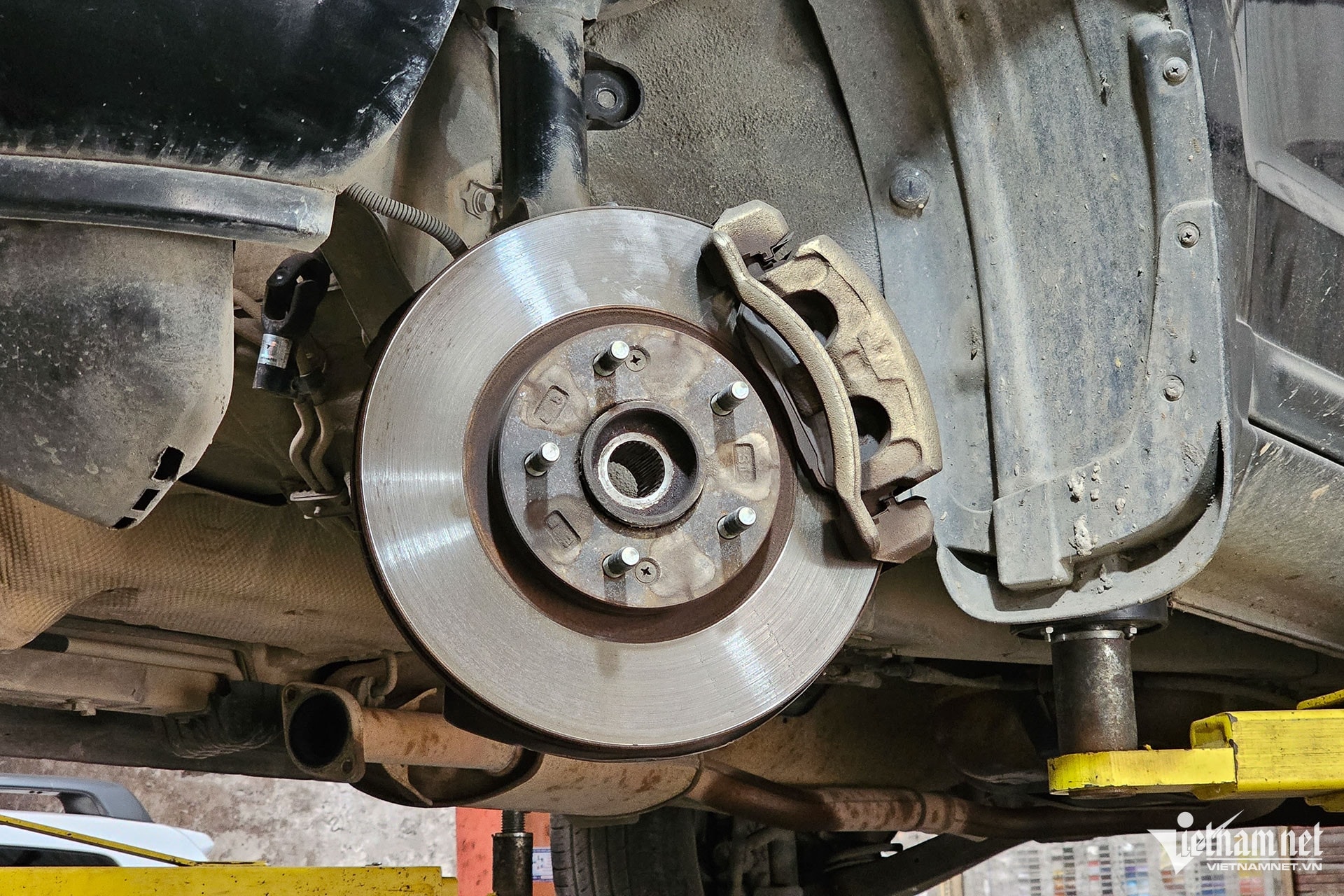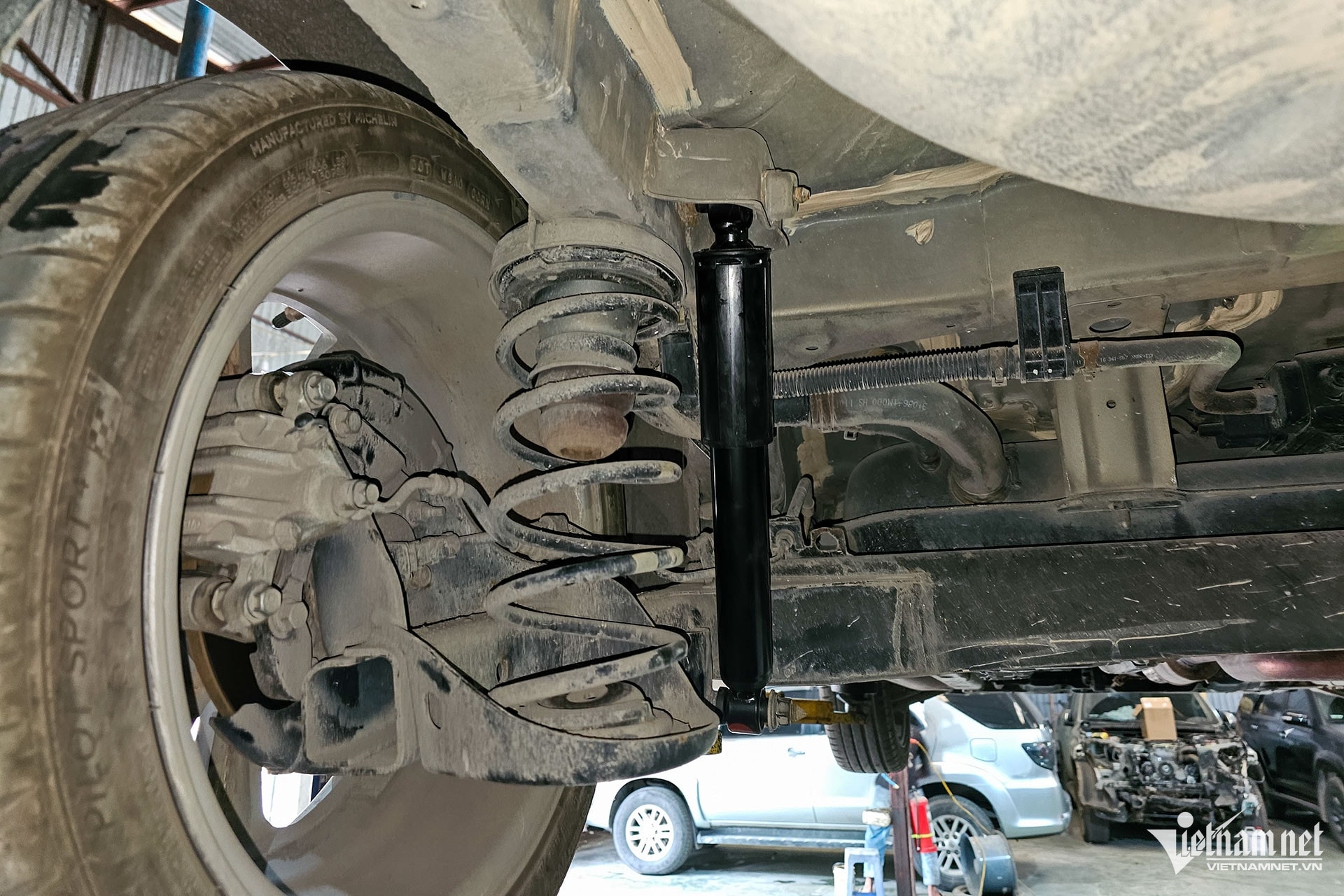5 reasons why car brake pads wear unevenly
Uneven brake pad wear often begins silently, but if not caught early, this hidden problem can lead to costly repairs.
Car brakes are an important part of the steering system. Therefore, when you hear a high-pitched screeching sound while driving or, more frighteningly, a hard noise coming from the wheel well, it is a sign that the brake system is having an abnormal problem.

When you bring your car in for a check-up, if the technician tells you that one brake pad is wearing faster than the other, here are some possible causes for this.
Brake caliper or slide pin stuck
The brake caliper is responsible for pressing the brake pads against the rotor every time you apply the brake pedal. When a brake caliper seizes, it will continue to press that brake pad against the rotor long after you release the brake pedal. If this happens for a long time, the brake pads in that position will wear out significantly faster.
The same thing happens if the slider pins are rusted or dry. They need to be lubricated regularly to keep everything moving smoothly. Otherwise, your brake pads will only work effectively on one side.
Brake pads are misaligned or of poor quality

Improperly installed brake pads (or cheap, ill-fitting pads) can cause uneven contact between the pads and the brake discs, causing uneven wear. Imagine wearing shoes where only one sole touches the ground halfway – over time one side will wear out faster than the other.
Unbalanced brake pressure
The hydraulic brake system operates based on uniform pressure to each wheel. When the oil pipe, main cylinder of the main pressure distributor has problems such as clogging, leaking or being insensitive, the pressure transmitted to the brake pads will be different. The side with more strong braking pressure will wear out the brake faster, while the other side works "indifferently", the disc still rotates even though the car is in P.
Warped brake disc
No need for too much warping, just a slight protrusion or a tiny dent on the disc is enough to cause a difference in thickness and surface flatness. Then you will feel the vibration in the brake pedal.

Brake pads must constantly adjust to fit the uneven surface of the brake disc, resulting in uneven wear. Removing, measuring, and re-grinding or replacing the disc is the only way to restore uniformity to the braking surface.
Suspension or tire problems
Brakes do not work alone but are a combination of brake pads, brake discs and the road surface through the tires and suspension system. When tires wear unevenly, the wheel angle is incorrect (toe, camber), or suspension parts such as tie rods and balance bars are loose, the braking force will be unreasonably dispersed.

This results in a larger braking load on one side of the wheel, causing the brake pads to wear unevenly. If not addressed early, you could end up spending more on parts and wheel alignment.
Solutions and notes for users
- Clean and lubricate the brake caliper and slide pin periodically to help the mechanism operate smoothly and avoid jamming.
- Use high quality brake pads and discs, install properly, and comply with the manufacturer's recommended clearance.
- Check the flatness of the brake disc every 20,000 - 30,000km; re-grind or replace if warping is detected.
- Check pressure and change brake fluid regularly, replace faulty cylinder.
- Align and balance tires, check suspension system periodically to ensure braking force is always evenly distributed.
Finally, regular car maintenance and care not only helps the brakes operate smoothly, stably and increase safety for each journey but also helps save on repair costs. Keep your car's brakes in the best condition before each trip.
Are you satisfied or disappointed with your car? Please share your experience about your car with VietNamNet Newspaper via email: otoxemay@vietnamnet.vn. Appropriate content will be posted. Thank you!


